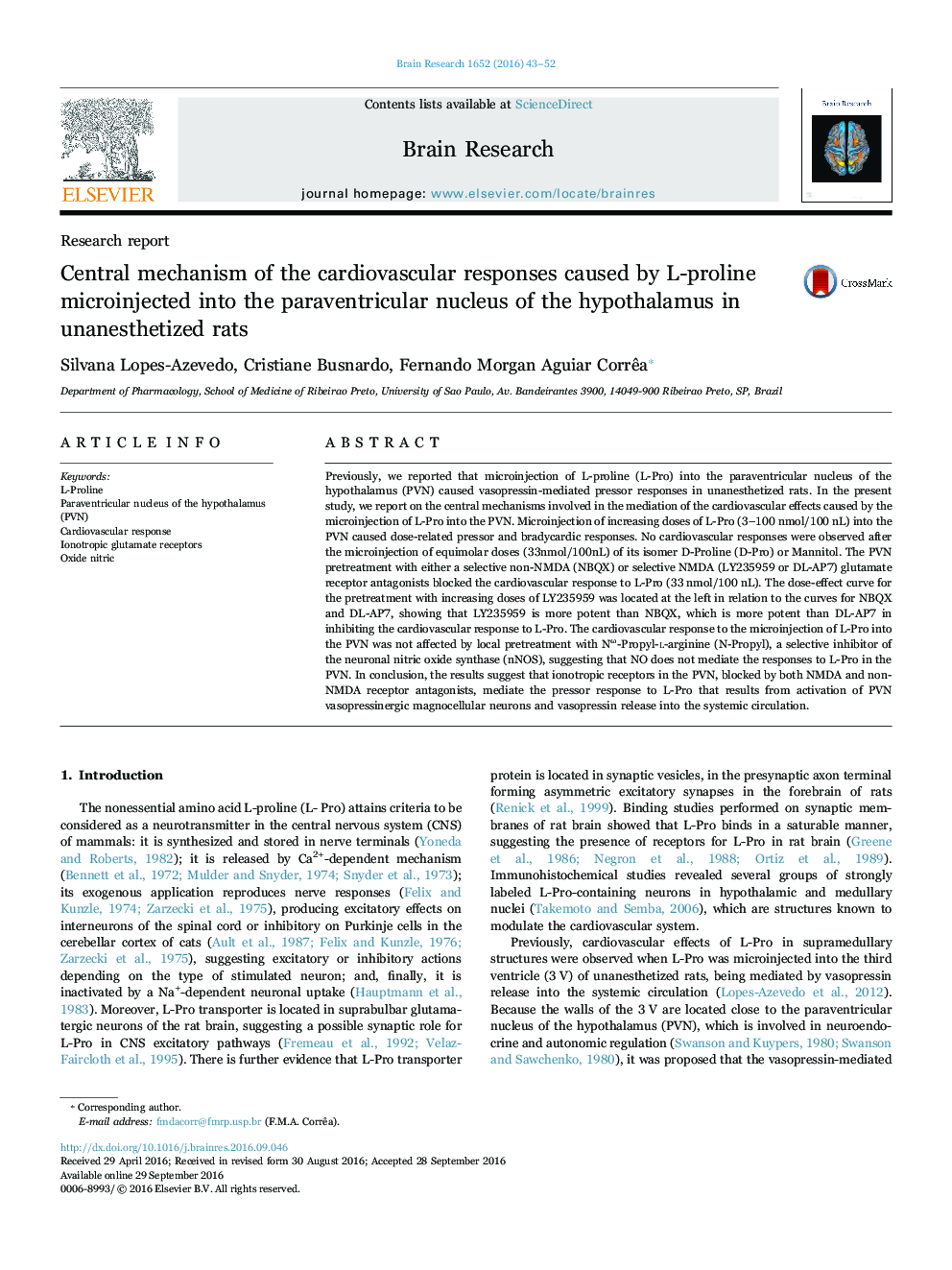| Article ID | Journal | Published Year | Pages | File Type |
|---|---|---|---|---|
| 4323480 | Brain Research | 2016 | 10 Pages |
•L-Proline is a putative neurotransmitter in the central nervous system of mammals.•L-Pro microinjected into the PVN caused pressor and bradycardia responses in rats.•L-Pro cardiovascular response was blocked by selective NMDA or Non-NMDA antagonists.•LY235959 was 100 and 30-fold more potent than AP-7 and NBQX to block L-Pro effects.•L-Pro cardiovascular response into the PVN was not found to be NO-mediated.
Previously, we reported that microinjection of L-proline (L-Pro) into the paraventricular nucleus of the hypothalamus (PVN) caused vasopressin-mediated pressor responses in unanesthetized rats. In the present study, we report on the central mechanisms involved in the mediation of the cardiovascular effects caused by the microinjection of L-Pro into the PVN. Microinjection of increasing doses of L-Pro (3–100 nmol/100 nL) into the PVN caused dose-related pressor and bradycardic responses. No cardiovascular responses were observed after the microinjection of equimolar doses (33nmol/100nL) of its isomer D-Proline (D-Pro) or Mannitol. The PVN pretreatment with either a selective non-NMDA (NBQX) or selective NMDA (LY235959 or DL-AP7) glutamate receptor antagonists blocked the cardiovascular response to L-Pro (33 nmol/100 nL). The dose-effect curve for the pretreatment with increasing doses of LY235959 was located at the left in relation to the curves for NBQX and DL-AP7, showing that LY235959 is more potent than NBQX, which is more potent than DL-AP7 in inhibiting the cardiovascular response to L-Pro. The cardiovascular response to the microinjection of L-Pro into the PVN was not affected by local pretreatment with Nω-Propyl-l-arginine (N-Propyl), a selective inhibitor of the neuronal nitric oxide synthase (nNOS), suggesting that NO does not mediate the responses to L-Pro in the PVN. In conclusion, the results suggest that ionotropic receptors in the PVN, blocked by both NMDA and non-NMDA receptor antagonists, mediate the pressor response to L-Pro that results from activation of PVN vasopressinergic magnocellular neurons and vasopressin release into the systemic circulation.
